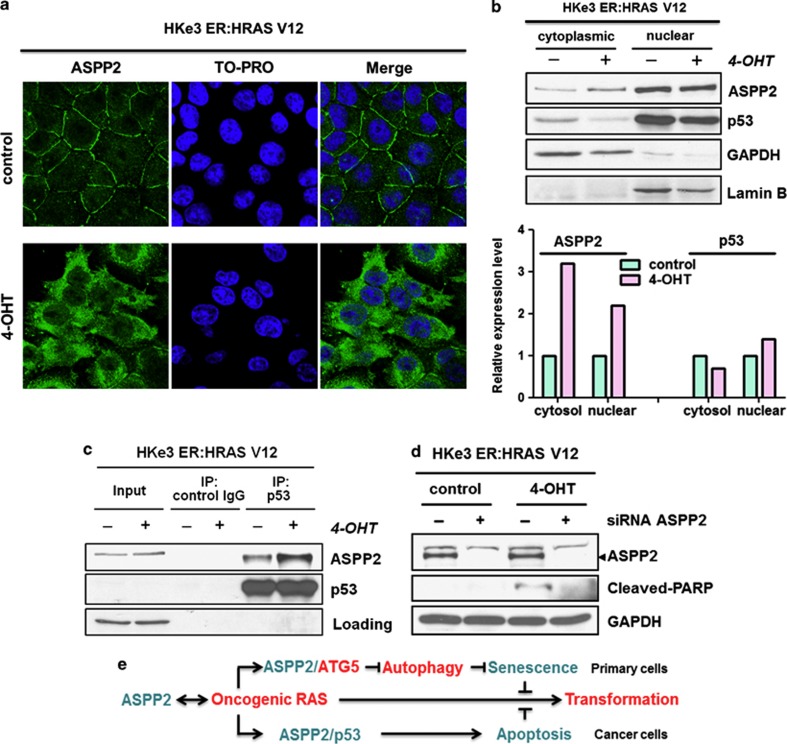Figure 6.
RAS activation induces ASPP2 translocation and enhances p53 binding in colon cancer cells. (a) RAS activation induces ASPP2 translocation. Immunofluorescence staining of ASPP2 in HKe3 ER:HRASV12 cells treated without (control) or with 100 nM 4-OHT for 3 days. (b) RAS activation induces cytoplasmic and nuclear accumulation of ASPP2. Cytoplasmic and nuclear fractions in HKe3 ER:HRASV12 cells with indicated treatments were isolated. GAPDH was used as a loading control for the cytoplasmic fraction, whereas Lamin B was used as a loading control for the nuclear fraction. The levels of ASPP2 and p53 were calculated by densitometry. Fold increase was calculated by normalising control group. (c) RAS activation enhances the binding between ASPP2 and p53. Total cell lysates from HKe3 ER:HRASV12 cells treated with or without 4-OHT were immunoprecipitated with an anti-p53 antibody or control IgG as indicated. (d) ASPP2 depletion reduces oncogenic RAS-induced apoptosis. HKe3 ER:HRASV12 cells transfected with control siRNA or siRNA against ASPP2 for 3 days were treated with or without 4-OHT (100 nM) for another day. Western blots showing expression levels of cleaved PARP and ASPP2. (e) Diagram summarises the interactions between ASPP2 and RAS for their regulation and functions (details are provided in Discussion)

